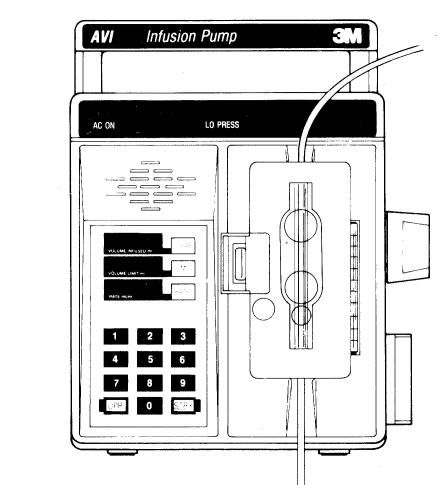
|

In mid-1990, the possibility of designing an upgrade for the 3M AVI-200 infusion pump (an intravenous drug application controller) arose. It was thought (by 3M) that if a checklist option could be added to the pump, so that (say) a nurse could automatically hear an audio checklist when various conditions arose within the pump, safety would be enhanced and that the 3M pump could be differentiated from other competing pumps then on the market. Basically, Heads Up would provide a circuit board to 3M that could be installed inside the pump to add this option.As a marketing strategy by Heads Up, it was thought that if we were able to respond to this idea very quickly by producing a functionally correct prototype (as proof-of-concept), we would have a very good chance of winning a contract to outfit all of 3M's infusion pumps in this manner. Our plan was to piggy-back an existing checklist unit, the CMS-700, onto an AVI-200 unit which 3M had provided to us, and to somehow quickly integrate this checklist unit with the pump.
In addition to providing us with an AVI-200 pump, 3M also provided schematics for the existing circuitry though, unfortunately, little in the way of an explanation as to how it actually worked. For example, there was no explanation of how the CPU within the pump expected to interface to the keyboard. This was information I really needed to have, since the checklist needed to be controlled by keys on the face of the infusion pump. Fortunately, a little reverse-engineering on my part solved this particular problem. (It also turned out that there were two unused, unmarked keys on the keyboard which were available for our use!)
Another problem was that the pump internally had very little room to spare; adding new circuit boards would be rather tricky. I actually created preliminary schematics for a internally-mounted circuit-board that would have provided the checklist option. But for the proof-of-concept prototype, we decided instead to replace one of the already-existing circuit boards within the unit, and then to cable this to the piggy-backed checklist unit. Of course, that meant that the "circuit board" had nothing more than a few connectors on it.
Finally, I needed to provide firmware for the checklist unit, and fortunately was able to modify the existing CMS-700 firmware to serve the purpose.
What makes this "my finest hour" is the speed with which these developments occurred. The modifications and re-programming took about 3 weeks, end-to-end, demonstrating dramatically the virtues of the now largely-complete reusable software library which I had created internally at Heads Up for just this eventuality. The now-working demo infusion pump, with its piggy-backed repackaged CMS-700, was promptly proudly presented to 3M ... and then largely ignored. Although 3M appeared satisfied with the results, there was no further work on the project, and the infusion pump was eventually returned to its unmodified state and given back to 3M. Very likely, 3M simply did not like the prices we were quoting.
Thus, the "finest hour" may also have been the most pointless exercise. Or, as has been said by someone, a lobster's finest hour is when he is dumped into boiling water.